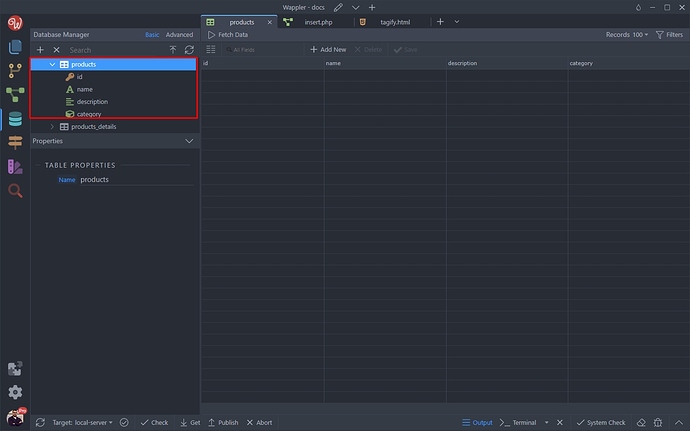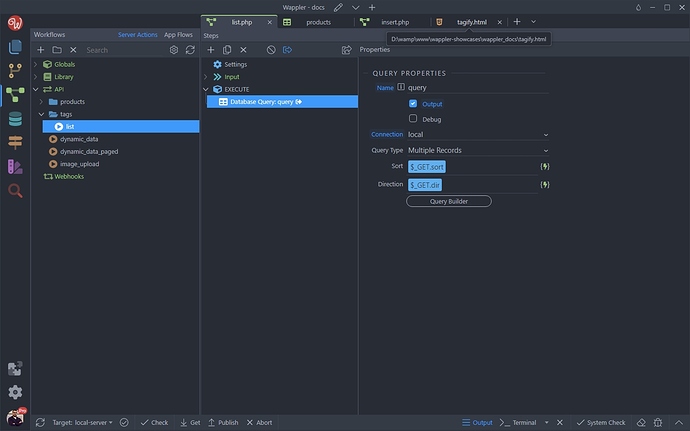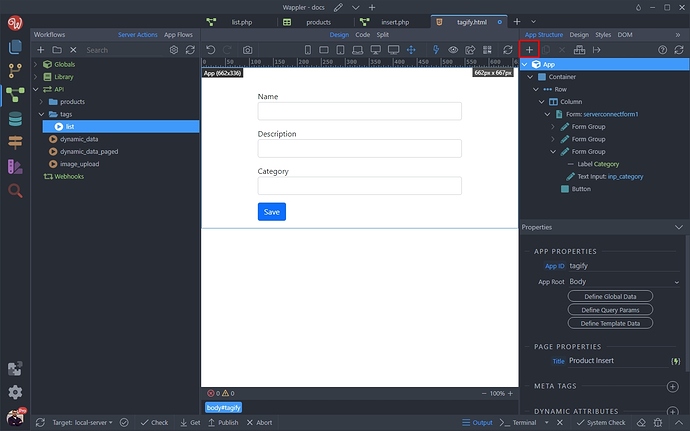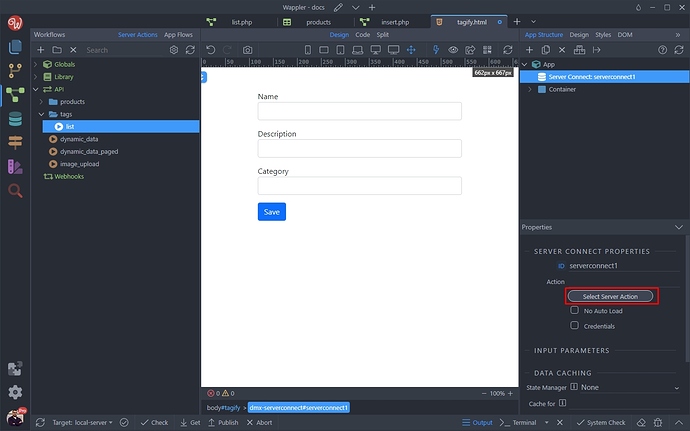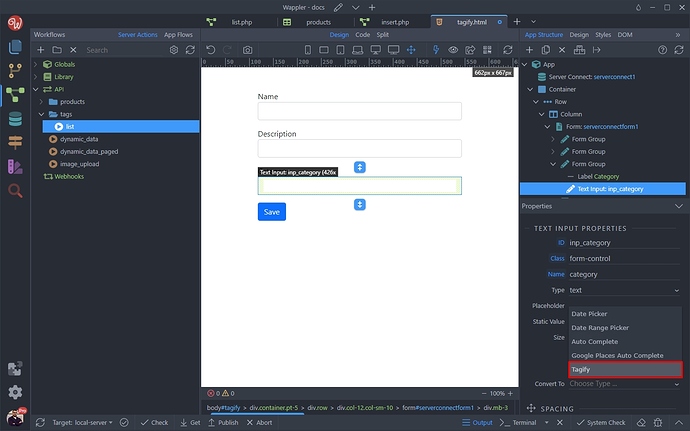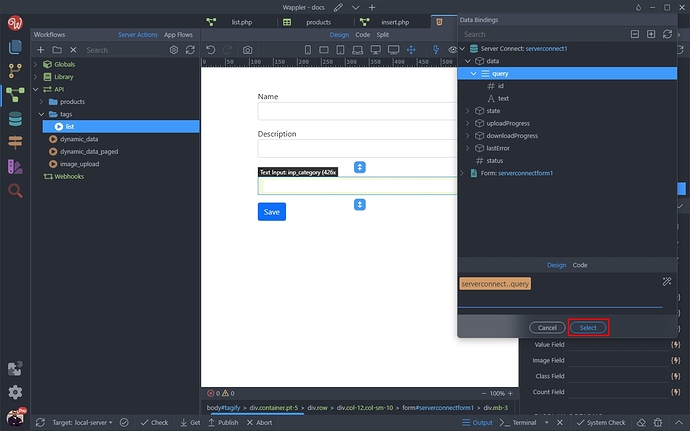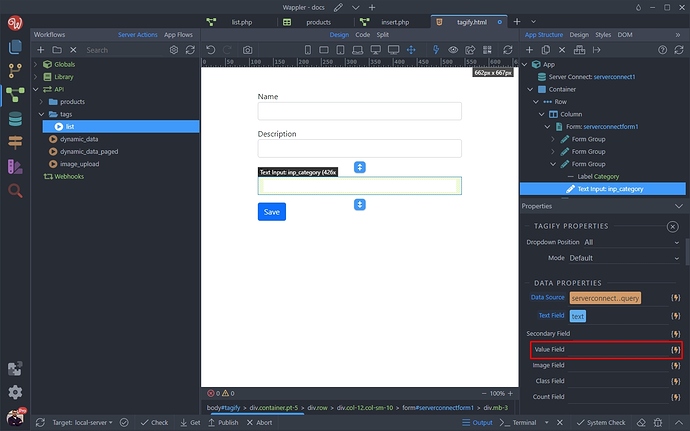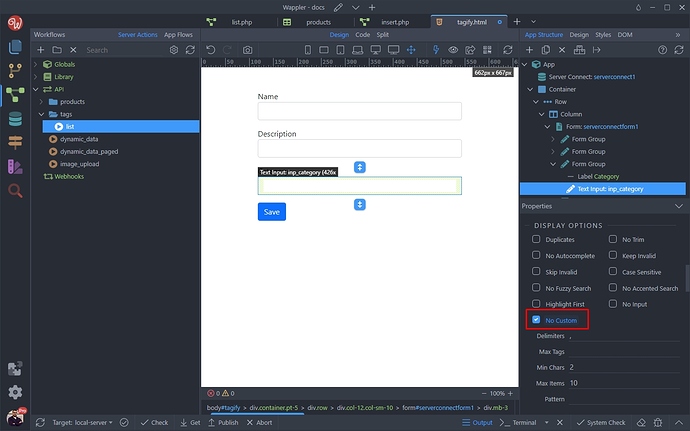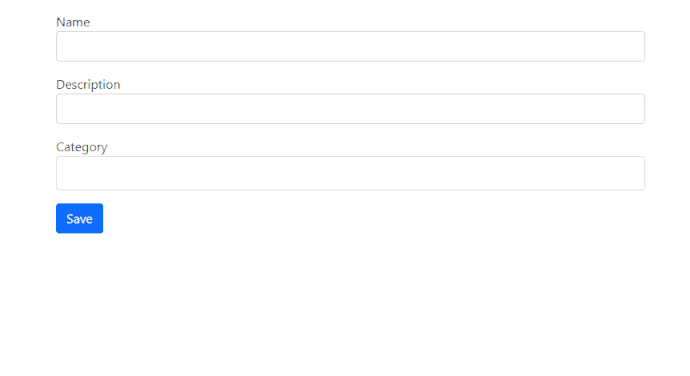Inserting Tagify Values into a Database
Intro
You can insert the value of the Tagify component into a database. In our example we will show you how to store it in a json field.
Database Setup
We have a products table and each product can be assigned to different categories. We’d like to use the Tagify component to pick the categories per each product, when inserting it in the database.
Our products database table is quite simple, an id field, name, description and category:
Our Category field type is json, and it will be used to store the categories selected in the Tagify input as an array:
Tagify Setup
We’ve created an insert record server action and form, using this database table. Now let’s setup Tagify for the category input.
Data source
We created a server action, returning our categories (or tags) from a database. It’s quite a simple server action, containing just a database query:
Let’s add this on the page, as we will need it as a source for the Tagify input:
Click Add New Component:
Under Data, select Server Connect:
And click the select server action button:
Select the server action returning the categories from the database:
And you are done.
Tagify Options
Now as we have our Data Source set up, lets add Tagify on the page. Select the Category text input and open the Convert to menu:
Then select Tagify:
Under the Tagify properties, select your data source:
This is the database query returned by the server action:
Then select the text to be displayed for the options:
Select the database field storing the categories names:
Then do the same for the Value field:
Select the database field storing the categories IDs:
Scroll down the options and enable the No Custom option. This way we disable entering custom/non-existing tags, so the user can only select from the existing ones:
And we are done. Let’s insert a new product and add some categories to it:
You can see the categories IDs stored in the category json field in our database table:
Having the array of category IDs in the database, you can now use them to filter the categories table and display the categories on the product details page.
